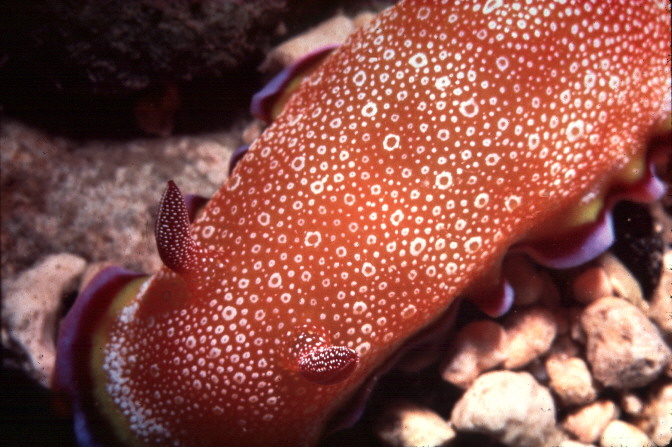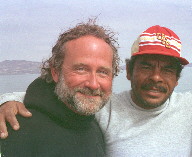 |
Chromodoris albopunctata
Chromodoris albopunctata (Garrett, 1879)
Andrew Garrett's molluscan publications were mainly on marine and terrestrial shelled gastropods of the south seas. The majority of his nudibranch contributions consist of specimens collected by him, deposited in the Godeffroy Museum, and described in publications by Ludwig Sophus Rudolphus Bergh (Neue Nacktschnecken der Sudsee, malacologische Untersuchungen, 1873-1879). However, in a pair of one page papers in the Proceedings of the Acad. Nat. Sci. Philadelphia, Garrett named two species of Tahitian nudibranchs: Risbecia tryoni (Garrett, 1873) and Chromodoris albopunctata.
In our 1989 paper, "Chromodorid nudibranchs from the Hawaiian Islands," Terry Gosliner and I aptly described this species as foudroyant:
"General body shape oval, low in profile (flattened dorsoventrally). Mantle completely overhangs the sides of the body, covering the foot. Mantle margin smooth, may be temporarily ruffled as it is lifted or moved by the animal.
"Rhinophores darkish red-brown, with interrrupted white streaks, dots, or dashes on the edges of the 21-35 lamellae, and a vertical white line down the center. The 8-10 gills are often retracted; expanded they are elongate, and encircle the anal opening. They are the same color as the rhionophores.
"Central portion of the dorsum light red, on which are numerous opaque white rings. Around the perimeter is an inner golden yellow-orange band, surrounded by an outer blue band. Between the red-and-white-ringed central dorsal region and the yellow band, the white coloration coalesces into splashes and patches, forming an interrupted boundary region.
"The foot is a uniform golden orange (same as the band between the blue and red- white portions of the dorsum), with no other colors forming a margin to the foot."
Living animals range from 20 to 45 mm in length, although E. Alison Kay noted a specimen 65 mm long (which she erroneously identified as Chromodoris imperialis).
Chromodoris albopunctata has been rarely but widely reported from the central Pacific ocean: Huahine, Society Islands (Tahiti); Oahu, Hawaiian Islands; Enewetak Atoll; Savo Island, Solomon Islands; and Batangas, Luzon, Philippines.
Almost nothing is known about its biology, but this species seems to be subtidal in occurrence.
For comparison, the accompanying photograph illustrates both Chromodoris albopunctata and Risbecia (=Chromodoris) imperialis (the elongate animal; dorsum yellowish with white dots, banded by a marginal purple line with periodic enlarged flanges in which occur varying numbers of yellow dots).
Photos and text by Dr. Hans Bertsch

Assoc. Prof. |
© The Slug Site, Michael D. Miller 1998. All Rights Reserved.
